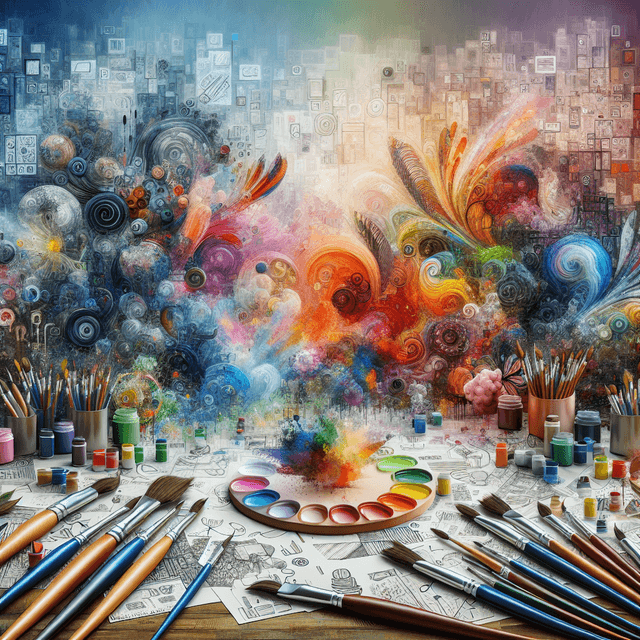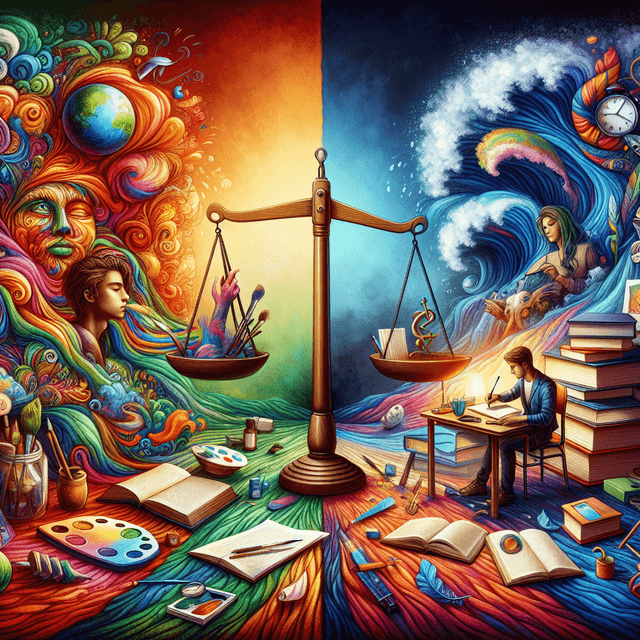Curating an Art Gallery: A Step-by-Step Guide
TL;DRCurating an art gallery involves several key steps: understanding the curator's role, developing an exhibition concept, sourcing artworks, designing the gallery layout, handling logistics, promoting the exhibition, and maintaining the gallery. This guide provides a comprehensive look at each step to help you successfully curate an engaging and memorable art exhibition.

Table of Contents
Understanding the Role of a Curator
A curator is more than just an organizer; they are storytellers, educators, and visionaries. They select and interpret works of art to create a cohesive narrative that engages and educates the audience. Understanding this multifaceted role is the first step in curating an art gallery.
Conceptualizing the Exhibition
The heart of any exhibition is its concept. This is where you decide what story you want to tell and how you want to tell it. Consider the themes, the artists, and the impact you want the exhibition to have on its visitors.
Sourcing Artworks
Once you have a concept, it's time to source the artworks that will bring it to life. This involves reaching out to artists, collectors, and other galleries. Building relationships and having a keen eye for art are crucial at this stage.
Designing the Layout
The layout of the gallery is your canvas, and the placement of each artwork is a brushstroke in your overall composition. Designing a layout that flows well and highlights each piece is essential for a successful exhibition.
Logistics and Installation
The practical side of curating involves handling the logistics of getting the artworks to the gallery and installing them. This includes insurance, transportation, and the physical setup of the exhibition space.
Marketing and Promotion
No exhibition can succeed without an audience. Marketing and promotion are key to attracting visitors. This can involve social media, press releases, and opening events.
Opening the Exhibition
The opening of the exhibition is a celebration of all the hard work that has gone into curating the gallery. It's a time to welcome visitors and introduce them to the art.
Monitoring and Maintenance
Once the exhibition is open, the curator's job isn't over. Monitoring the gallery to ensure the artworks are secure and properly displayed, as well as maintaining the space, is an ongoing task.
Conclusion
Curating an art gallery is a complex and rewarding process. By following these steps, you can create an exhibition that resonates with audiences and showcases the beauty and power of art.
Understanding the Role of a Curator
The curator is the creative force behind an art exhibition, responsible for selecting, organizing, and presenting works of art in a way that tells a story or conveys a particular theme. They are the bridge between the art and the audience, providing context and meaning to the works on display. Curators must have a deep understanding of art history, current art trends, and the ability to anticipate what will resonate with the public.
Key responsibilities of a curator include:
- Researching and selecting artworks
- Writing labels, catalog essays, and other interpretive materials
- Coordinating with artists and lenders
- Planning the exhibition layout
- Overseeing the installation of artworks
- Organizing educational programs and events related to the exhibition
Conceptualizing the Exhibition
Before any art is hung on the walls, the curator must develop a clear vision for the exhibition. This begins with a strong concept that ties the show together. The concept should be engaging, original, and relevant to current discourses in the art world or society at large.
When conceptualizing the exhibition, consider the following:
- What is the central theme or idea?
- How will the exhibition contribute to or challenge existing conversations in art?
- What is the intended impact on the audience?
- Which artists or works of art best represent the theme?
Sourcing Artworks
With a concept in hand, the next step is to source the artworks that will make up the exhibition. This can involve a variety of activities, such as visiting artist studios, attending art fairs, contacting private collectors, and negotiating loans from other institutions.
Key considerations when sourcing artworks include:
- Ensuring the artworks align with the exhibition's concept
- Considering the diversity of artists and perspectives represented
- Assessing the condition and availability of the artworks
- Securing loans and negotiating contracts
Designing the Layout
The layout of the exhibition is critical to the viewer's experience. It should guide visitors through the space in a way that is intuitive and enhances their understanding of the art. The curator must consider the flow of the gallery, the sightlines, lighting, and how the placement of each work affects the interpretation of others around it.
When designing the layout, keep in mind:
- The narrative or chronological order of the artworks
- The spatial relationships between different works
- The need for quiet contemplation or interactive engagement
- Accessibility for all visitors
Logistics and Installation
The logistics of getting the artworks to the gallery and installing them is a complex process that requires careful planning and attention to detail. This includes arranging for the safe transport of artworks, ensuring they are properly insured, and coordinating with technicians for the installation.
Important aspects of logistics and installation:
- Creating condition reports for incoming artworks
- Planning the installation schedule
- Coordinating with shippers and handlers
- Installing the artworks safely and securely
Marketing and Promotion
An exhibition can only be successful if people know about it. Marketing and promotion are essential for attracting visitors to the gallery. This can include traditional methods like print advertising and direct mail, as well as digital strategies like email newsletters, social media campaigns, and online event listings.
Effective marketing and promotion tactics:
- Developing a strong visual identity for the exhibition
- Crafting compelling press releases and media kits
- Engaging with the community through events and partnerships
- Utilizing social media to build excitement and reach a wider audience
Opening the Exhibition
The opening of an exhibition is a celebratory event that marks the culmination of the curator's hard work. It's an opportunity to introduce the public to the art and to create a memorable experience that encourages visitors to explore the exhibition in depth.
Tips for a successful opening:
- Hosting a preview or vernissage for press and VIPs
- Providing engaging and informative opening remarks
- Offering guided tours or talks by the curator or artists
- Ensuring a welcoming and festive atmosphere
Monitoring and Maintenance
Once the exhibition is open, the curator's role shifts to one of monitoring and maintenance. This involves regularly walking through the gallery to check on the condition of the artworks, ensuring that lighting and environmental controls are functioning properly, and making adjustments as necessary.
Ongoing responsibilities include:
- Addressing any issues with the artworks or displays
- Gathering feedback from visitors
- Keeping the gallery staff informed and engaged
- Preparing for the deinstallation of the exhibition
Conclusion
Curating an art gallery is a multifaceted process that combines artistic vision with practical skills. From the initial concept to the opening night and beyond, each step is crucial in creating an exhibition that is both aesthetically pleasing and intellectually stimulating. By following this step-by-step guide, curators can navigate the complexities of the art world and bring their unique exhibitions to life, offering visitors an enriching and enlightening experience.



